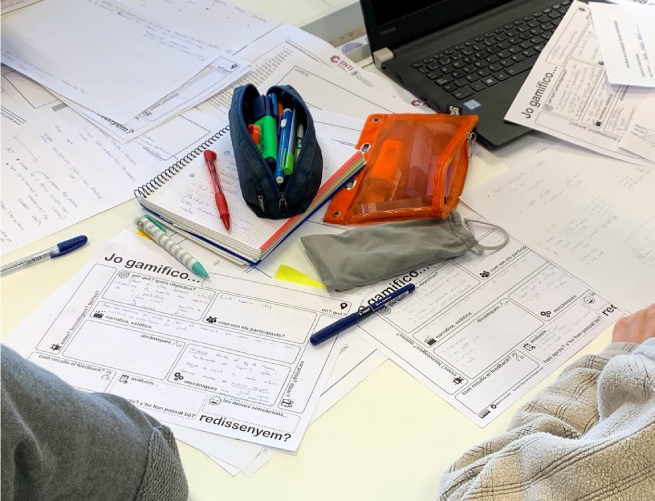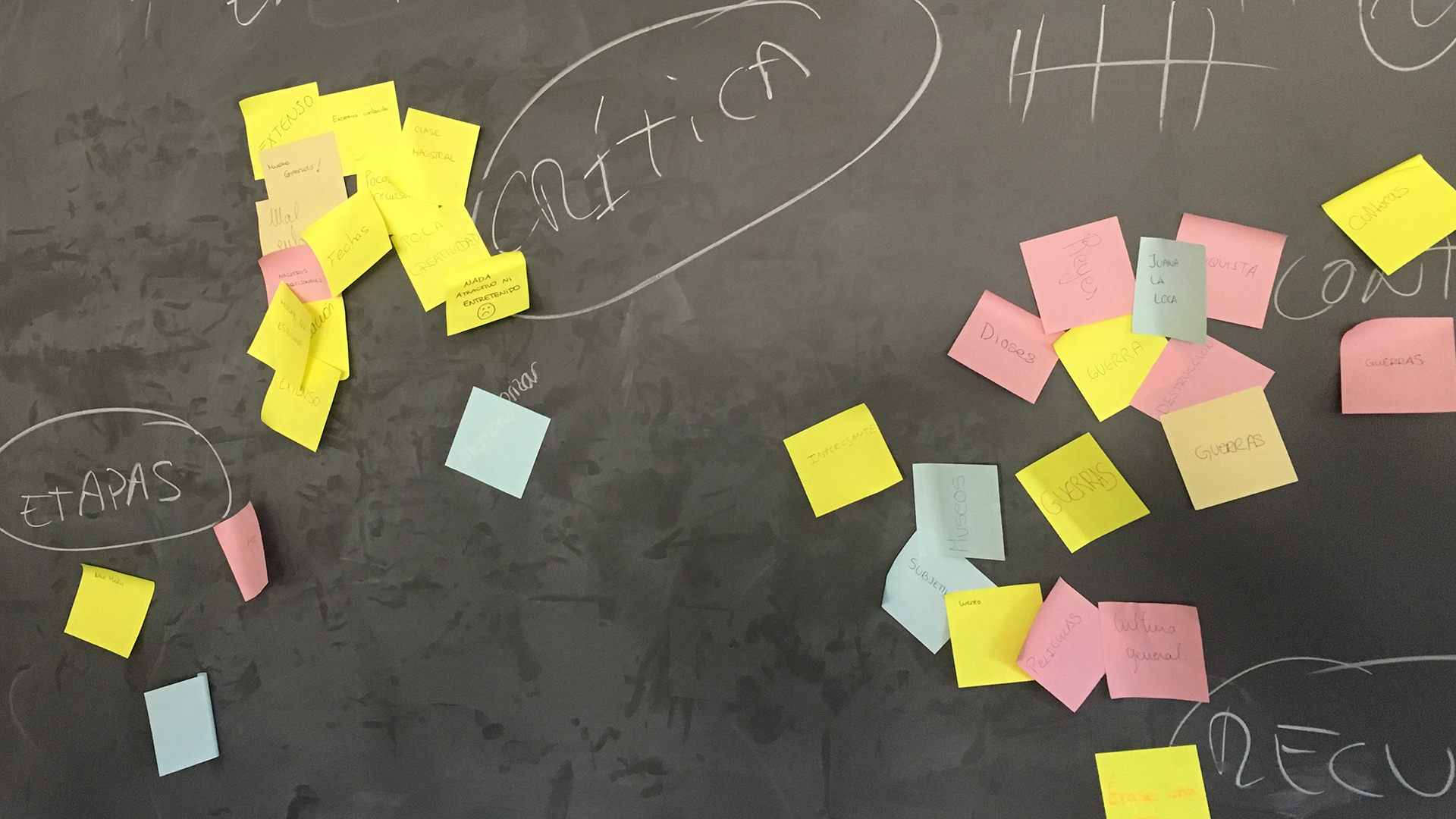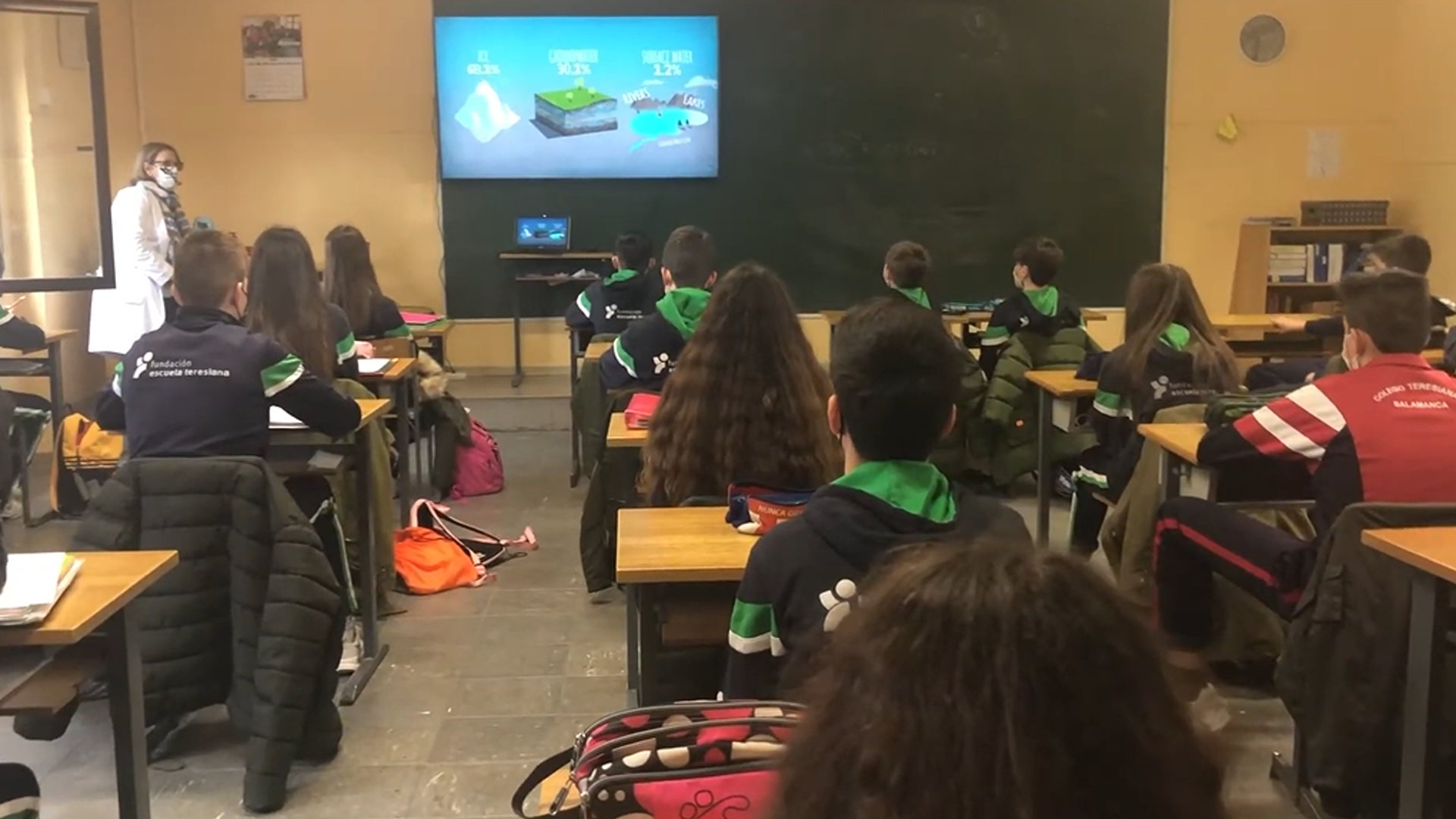Game-based Learning
Classroom Experience
A gamification experience for initial teacher training.
Girona, Spain Show map
A gamer has been abducted by the Digital Globalizing Union (DGU). She can only be saved by the Special Protection Forces (SPF), a group of scientists with a high degree of knowledge in video games. But they have lost their memory and will have to recover it soon in order to save the gamer.

Context
This experience is part of “Gamification and Video games”, a 4th year optional course from the Bachelor's Degree in Primary School Education at the University of Girona. It is a course of the ICT Major, which means the students are interested in educational technology. Since this is a senior-year course, the level of reflection at this point is deeper.
Highlights...
It was first implemented in 2013-2014 and has been repeated since then.
Every iteration has been modified so as to improve it, taking into account the participants' experience and the professor's observations.
The type of work collaborative and the purpose is to achieve a common goal. There is a feeling of collaborative group learning and a need to share learnings.
After going through the gamified experience, the students design their own gamifications.
Objectives
Didactic sequence
1

Design of the experience.
In the first design of the experience, a gamification Canvas was used. The one used later was self-created and entails the main aspects that should be considered when designing a gamification experience. Once some things are defined -what is to be gamified and why, what the participants are like- the main body of the experience is designed: -The narrative: a good story that engages students and helps to link all the contents coherently.
-The dynamics explaining how students will relate to each other and to the development of the story. -The mechanics specifying how the whole experience will work and defining clearly the proposed challenges.
It is also important to define the tools and resources that will be used as well as the surprising or random elements that might arise during the experience.
Finally, it is important to know how to gather feedback to assess and analyze the results.
-The dynamics explaining how students will relate to each other and to the development of the story. -The mechanics specifying how the whole experience will work and defining clearly the proposed challenges.
It is also important to define the tools and resources that will be used as well as the surprising or random elements that might arise during the experience.
Finally, it is important to know how to gather feedback to assess and analyze the results.

2

Implementation.
On the first day of class, students are introduced to the narrative. They discover they are not students but video game experts with no memory who need to recover it in order to save a gamer abducted by the Digital Globalizing Union (DGU). From now onwards, the class sessions focus on solving the challenges (developing small video games) so as to acquire enough knowledge to fight the DGU. Once they have acquired enough competences (by the end of the course) they are able to face the DGU through a Breakout activity.

3
![]()
Gathering of students' feedback.
During the experience, evidence should be gathered to make sure the goals are achieved. Not only goals referring to the design of the experience but also the ones referring to the students' learnings. In this case, the students' feedback is gathered from the systematic observation of class sessions, from the outcomes of solved challenges, and from a brief final survey.
4
![]()
Evaluation and analysis.
As it happens with any learning experience, after the implementation comes the assessment. In order to do this, the previous step of gathering the evidence is very important. One should closely value the aspects that went well, and also the aspects that are were not so good, or that directly did not fulfilled the objectives set at the beginning.
5
![]()
Redesign.
As it is the case with any learning experience design, it is important to take advantage of assessment and analysis of evidence in order to redesign and improve the experience. The Iterative Game Design, for example, is based on this: a process that improves video game prototypes as from repetition. Or Mitchel Resnick's well-known creative learning spiral, it keeps going and going from imagining, creating, playing, sharing, and reflecting, and then again to imagining how it could be improved.
Evaluation and Conclusions
Successes
Students claim to feel more motivated and more involved in the course and think their learning is more significant.
Thanks to the challenges, teamwork was really achieved as well as collaboration among members of the team and among different teams to fulfill common goals.
Students were able to experience how to implement a learning methodology. Also, they valued it as a fun experience.
Things to improve
At some points of the experience development, the narrative loses prominence. This has to be improved.
OpenSim was used for the first implementations. However, this application has had no support for many years now. An alternative should be found. Minecraft is being explored.
For the next editions, students will be asked to rethink the design of the course for the following year.
Since it was first implemented, the experience has been improving, getting a very good assessment from the participants. The goals were correctly achieved.

Take this experience to your classroom!
Tips to adapt the experience to your classroom
1
Before starting
With the design of the gamification experience, it is worth resorting to literature on the subject: reading a book or article, learning about other teachers' experiences, visiting a webpage...
2
It is important
To devote quite some time to the design of the gamification proposal. All the details must be taken into account. Using a template can be very helpful.
3
The introduction
Of the experience to the students is a crucial moment. You should be self-confident and passionate: the explanation must be credible.
4
Keep
The students hooked to the course, and the narrative chosen is key. The spark of the narrative should be kept alive all along the implementation.
5
The most important thing
The students' learnings are the most important thing. That this actually happens should be verified in the design as well as in the implementation of the experience.
Links
Pedagogical links





